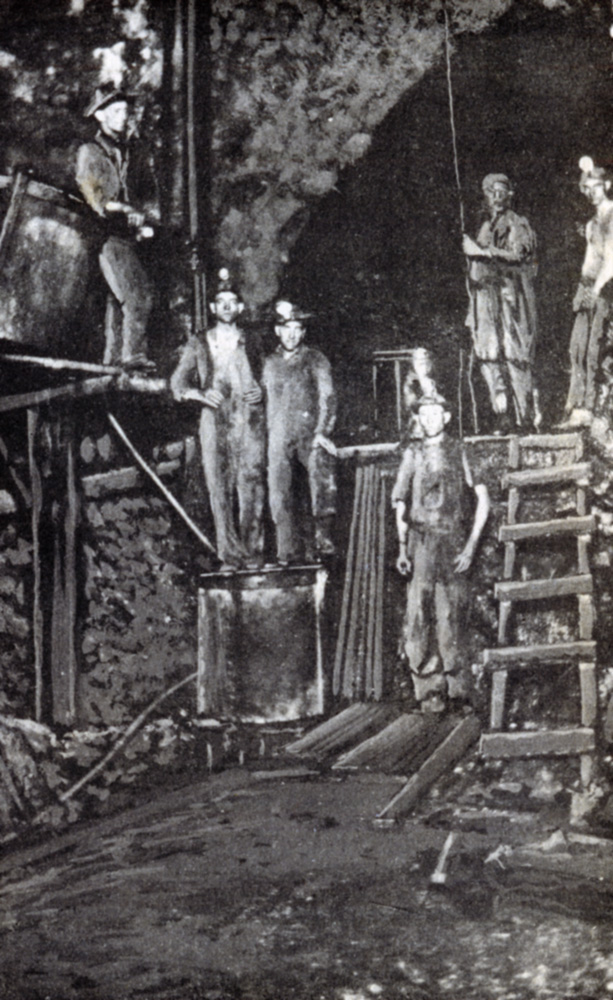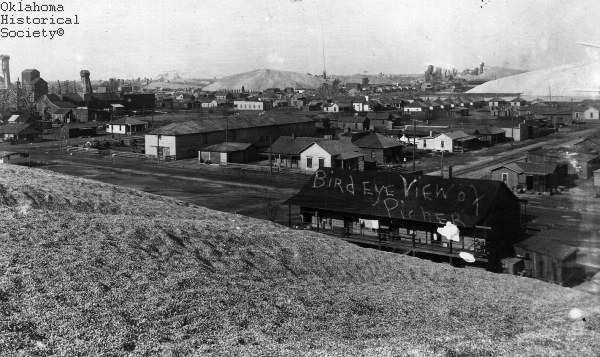
PICHER.
Located eight miles north of Miami on U.S. Highway 69 in Ottawa County, Picher was once Oklahoma's most northeastern incorporated city. Its city limits adjoin the Kansas state line. In late 1913 the town developed around the lead and zinc ore strike on Harry Crawfish's allotment. Picher's name honored O. S. Picher, owner of the Picher Lead Company. Statewide newspapers reported that the town was born overnight. Picher incorporated in March 1918. It had a population of 9,726 in 1920, which peaked at 14,252 in 1926, at the height of mining. As mining activity decreased, the population dropped steadily to 5,848 in 1940 and to 2,553 in 1960.
Picher was the most productive mining field in the Tri-State Lead and Zinc District (Oklahoma, Kansas, and Missouri) and produced more than $20 billion in ore from 1917 to 1947. More than 50 percent of the lead and zinc metal consumed in World War I came from the Picher Field. During the mining boom years more than fourteen thousand men worked in its mines, and another four thousand worked in approximately fifteen hundred mining service businesses. Many of these workers commuted to work using an extensive trolley car system that ran all the way to Carthage, Missouri. In the subsequent years Picher could not attract new industry, because a majority of the real estate belonged to restricted Quapaw heirs and because the town had many mines distributed underneath the surface.
O. S. Picher provided the city's first deep water well, thereby providing the beginning of a municipal water system. The leasing system employed for mining dictated that an ore reduction mill be built on each forty-acre tract. In 1927 there were 248 mills operating in the Picher Field, and this continued until the late 1930s when centralized milling resulted in mill consolidation. When lead and zinc mining finally ceased in 1967, pumping water from the mines ceased and they began to fill with water, accumulating 76,800 acre-feet of mine water under ground. This contaminated water began to seep from the mines in 1973. In 1983 the Picher area became part of the U.S. Environmental Protection Agency's Superfund Site program and remains the number one Superfund Site in America. With 1,400 mineshafts in the Picher area, 450 of which are still open, seventy million tons of waste tailings, and thirty-six million tons of mill sand and sludge, environmental clean up remains a monumental task.
In 2000 Picher's population stood at 1,640, and the town employed an aldermanic government form.
Picher, Oklahoma, no longer exists as a community. In spring 2008 an F4 tornado damaged many houses and killed six people. Due to the possibility of collapsing mine shafts, the Environmental Protection Agency (EPA) determined that the town was dangerous to inhabit. The city government officially cancelled Picher's incorporated status on September 1, 2009. The EPA evacuated the town and in June 2009 completed a buyout of all residents, enabling them to relocate. In 2010 the U.S. Census counted a population of 20 within the boundaries of the former town of Picher. In early 2010 the demolition of houses and business buildings began, and in 2011 only one business house and six residences remained. The Tri-State Zinc and Lead Ore Producers Association Office (NR 03000097) was been added to the National Register of Historic Places in 1997 and housed the Picher Mining Field Museum.







